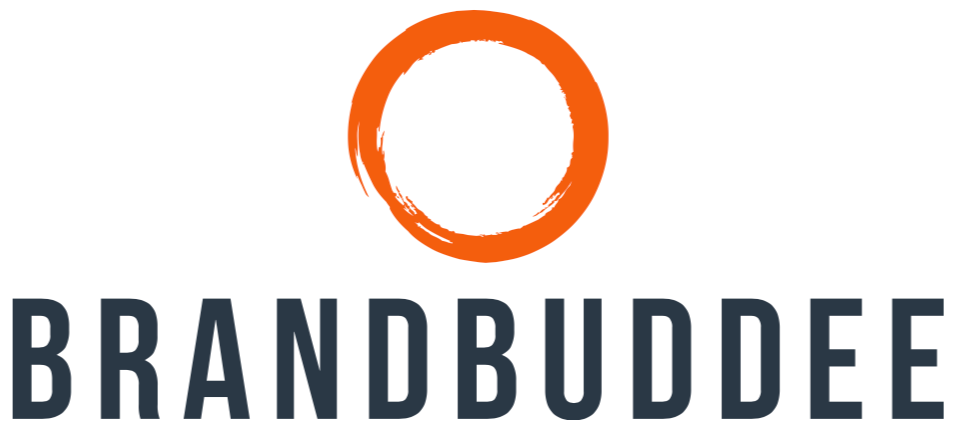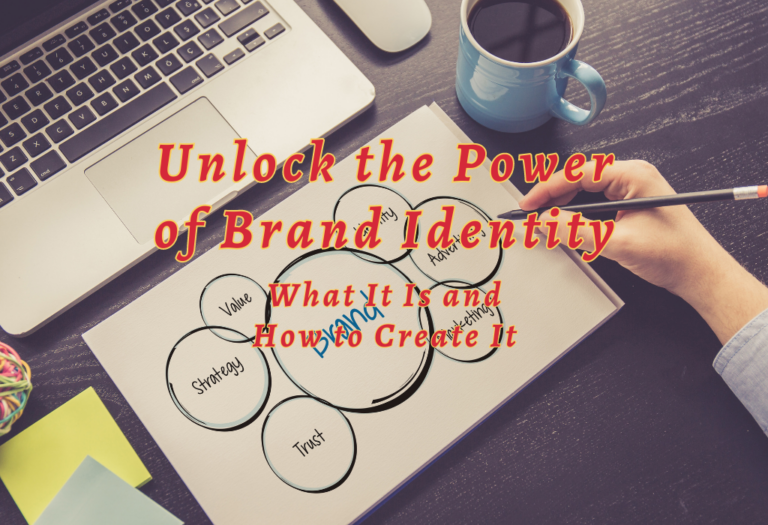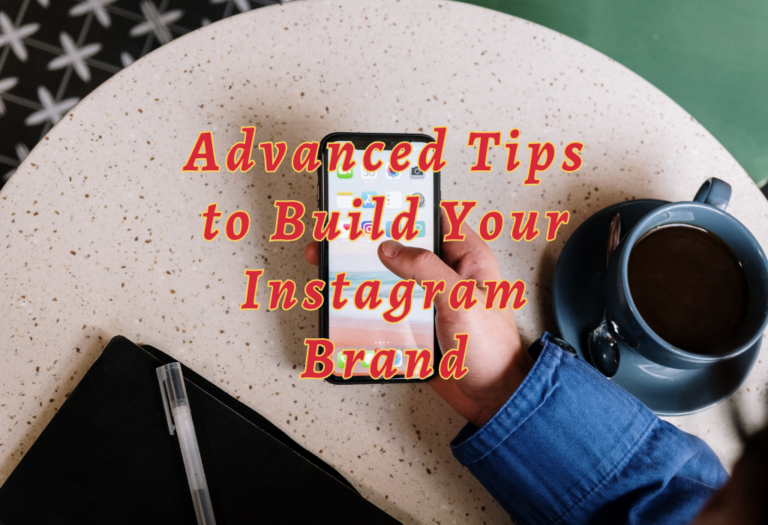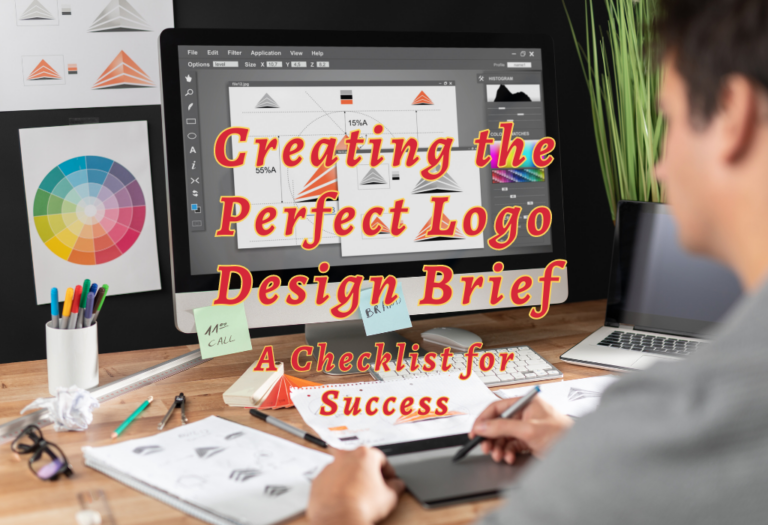Unlock the Power of Your Brand: What Is a Logo?
A logo is an essential part of a business’s identity. It helps create recognition and trust with customers, as well as set the tone for all branding efforts.
But what exactly is a logo? What types of logos are there? How do you design one that stands out from the crowd and conveys your brand message effectively?
These questions – and more – will be answered in this blog post about creating powerful logos. So if you’re looking to make sure your company has an eye-catching logo, then read on.
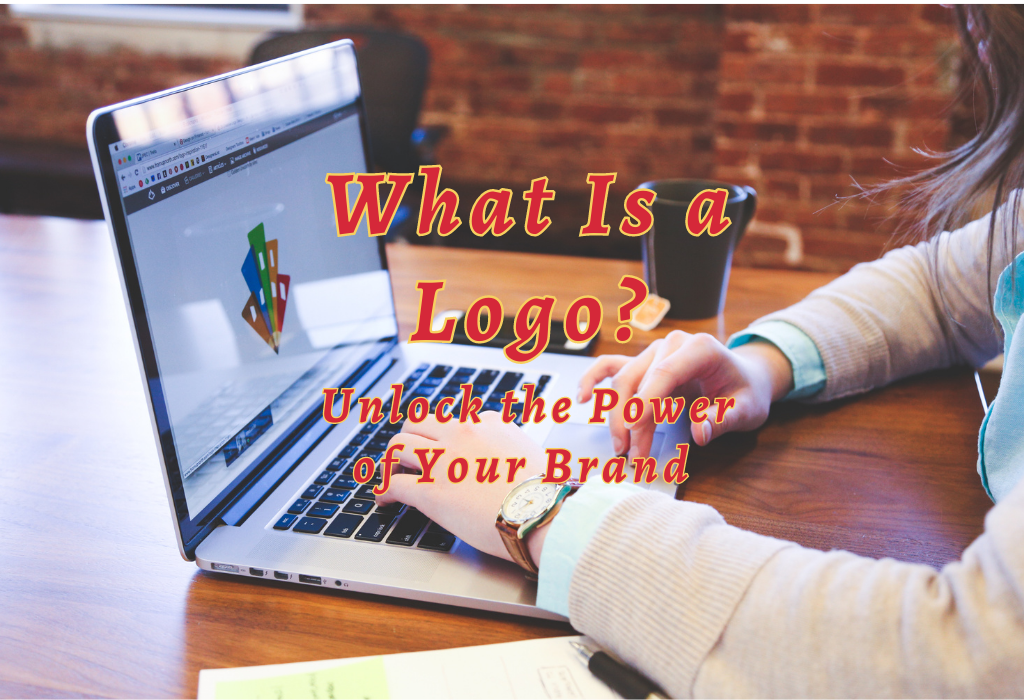
What is a Logo?
A logo is a graphic mark, emblem, or symbol used to identify and promote a brand, product, service, or organization. It is the visual representation of a company’s identity and serves as an important tool for building recognition and trust with customers. Logos can be found everywhere – from websites to business cards to billboards. They are often the first thing people notice when they come across your brand.
Logos come in all shapes and sizes but typically consist of text or images that represent the company’s values and mission statement. The most successful logos are simple yet memorable; they should be easily recognizable even when viewed from afar. Some popular examples include Apple’s iconic bitten apple logo or Nike’s swoosh design which has become synonymous with athleticism worldwide.
Types of Logos
Logos are of various types most popular of which are discussed below:
Wordmarks Logo
Wordmarks are logos that feature the name of a company or brand in text form. These logos are often used to create an immediate association between the logo and the name of the company, making them instantly recognizable.
Examples include Google, Coca-Cola, and Microsoft.
Monogram Logo
Monogram logos use initials from a company’s name to create a unique visual identity for their brand. This type of logo is particularly popular with luxury brands as it creates an air of exclusivity and sophistication.
Examples include Louis Vuitton, Chanel, and BMW.
Pictorial Marks Logo
Pictorial marks use symbols or icons to represent a brand without using words or letters at all. These types of logos can be extremely effective when they accurately reflect what the business does while also being memorable enough to stick in people’s minds over time.
Examples include Apple’s apple icon, Nike’s swoosh symbol, and Starbucks’ mermaid logo design.
Abstract Logo
Abstract logo marks don’t have any specific meaning attached to them but rather rely on shape recognition for instant recall by customers when they see it again later on down the line. Abstract shapes like circles, squares, and triangles can be combined in interesting ways that make these types of logos stand out from others in terms of uniqueness while remaining recognizable enough for customers to remember them easily.
Examples include Adidas’ three stripes mark, Mastercard’s interlocking circles, and Shell Oil Company’s scallop shell emblem.
Mascot Logo
Mascot logos feature cartoon characters that act as ambassadors for companies who want their brands associated with fun personalities instead of just corporate images. These mascots can take many forms such as animals, people, or even mythical creatures depending on what best suits each brand.
Examples include KFC’s Colonel Sanders mascot, the Michelin Man character representing Michelin tires, and the Pillsbury Doughboy mascot for Pillsbury products.
Emblems Logo
Emblems are similar to wordmarks except that they incorporate additional elements into their designs such as badges or seals which add more depth than regular text-based designs alone could achieve. These emblems usually contain both texts along with other graphical elements such as stars, shields, or laurel wreaths which help give them a more impactful presence compared to other simpler styles like wordmarks alone would provide.
Examples include Harley Davidson’s iconic bar & shield emblem design featuring wings above its lettering along with US Army’s eagle seal containing stars around its edges plus the United States Navy’s anchor & fouled anchor badge incorporating rope into its overall look too.
Combination Mark Logo
A combination mark is another type where two different styles (such as pictorial mark + wordmark) come together forming one single cohesive unit that helps strengthen customer recognition even further due to both parts working together synergistically towards achieving this goal.
An example here would be McDonald’s golden arches combined with its accompanying lettering below it creating one unified whole look helping reinforce this fast food chain’s global presence today
Logo Design Process
A logo should reflect the values, mission, and personality of a business while also being memorable and recognizable. The process of creating a logo typically involves research, brainstorming, sketching, refining concepts, creating mockups, testing designs with target audiences, and making revisions until the final logo is approved.
Research
Before beginning any design work it’s important to do some research into the industry as well as competitors to gain insight into what kind of logos are already out there and how they can be improved upon. This will help inform decisions about color palette choices as well as font styles that could be used in the design process.
Brainstorming
Once you have done some research on logos in your industry and trends in graphic design, it’s time to brainstorm ideas for what type of logo would best represent your brand or product/service offering. Brainstorming sessions with colleagues or even friends outside of work are great ways to come up with new ideas and perspectives on how to approach this project creatively.
Sketching
After coming up with some initial concepts through brainstorming sessions, sketch out these ideas by hand so they become tangible visuals rather than just abstract thoughts floating around in your head. This step helps bring life to those early concepts before investing too much time into digital mockups or revisions later down the line if needed.
Refining Concepts
Once sketches have been created, it is time to refine them by adding colors or gradients if necessary. Other elements such as textures and patterns may be used to enhance the overall look of the logo conceptually. Experimentation with different layouts should take place until one that looks best aesthetically while still conveying all intended messages enough for viewers to understand easily at first glance without having too much information crammed into one image which could lead to confusion instead of clarity when viewed from a distance.
Creating Mockups
Now comes the time for creating mockups using software programs like Adobe Photoshop so designers can see what their proposed logos would look like on various materials such as t-shirts, mugs, banners, etc. This allows them not only to test how their designs appear but also to make sure everything lines up correctly when printed out onto physical objects – something which might otherwise go unnoticed during earlier stages due to its small size compared to larger items such as billboards etc.
Testing Designs with Target Audiences:
Testing designs with target audiences is essential, as it provides valuable feedback regarding whether people resonate with the creations or not. This cannot always be determined just by looking at them alone, since everyone has different tastes and preferences when it comes to art and aesthetics. By asking questions about why certain aspects were chosen over others (e.g., fonts versus icons) and incorporating this data back into future iterations, better outcomes may result than if no testing had taken place whatsoever.
Revisions
Last but not least comes making revisions until everyone involved agrees upon a single version which will serve as the official corporate identity going forward. This often involves tweaking minor details and taking feedback from stakeholders into account during decision-making processes throughout the development stages leading up to completion dates.
Key Takeaway: Creating a logo is a complex process that requires research, brainstorming, testing with target audiences, and multiple iterations to ensure the design conveys intended messages clearly while resonating with viewers.
Logo Design Elements
Now that we are done with the process of designing a logo, let’s explore different elements of logo designing:
Typography is one of the most important elements, as it conveys a brand’s message and personality through its font choice. Sans serif fonts such as Arial or Helvetica are often used for modern brands, while serif fonts like Times New Roman can be used to give an air of sophistication. It’s also important to consider how legible the font will be when viewed from different distances and sizes.
Colors have a huge impact on how people perceive your brand—they can evoke emotions, create associations with certain products or services, and even influence purchasing decisions. While some brands opt for bright colors that stand out in a crowd (think Coca-Cola red), others prefer muted tones that exude elegance (like Tiffany & Co blue). When selecting colors for your logo, think about what feeling you want to convey and which hues best represent your company values.
Shapes can be used to add a layer of complexity and intrigue to logos. Geometric shapes, such as squares, circles, or triangles are often employed for their clean and professional look; organic shapes like leaves or flowers may provide a playful element; while abstract forms create an air of mystery. Symbols/icons/illustrations can also be utilized to instantly recognize the brand without requiring words at all.
Textures, patterns, and backgrounds can also enhance logos by creating texture or movement within them—for example using stripes instead of solid color blocks adds dynamism to the overall design. Negative space is another powerful tool designers use to draw attention to specific parts of their designs—it works by leaving blank areas around key elements so they stand out against other components in the logo itself.
By understanding the fundamental elements of logo design, businesses can create logos that stand out and capture the attention of their target audience. Now let’s explore how having a logo can benefit your business.
Key Takeaway: A successful logo design is composed of several key elements, including typography, color, shapes symbols, textures patterns, and negative space; each conveying a distinct message or emotion to the audience.
Benefits of Having a Logo
A logo is a visual representation of your business and its values. It’s the first thing customers will see when they come across your brand, so it’s important to make sure it conveys the right message. Here are some key benefits of having a well-designed logo:
Brand Recognition
A good logo can help build recognition for your business by creating an instant connection between you and your products/services. It should be simple yet memorable so that customers can easily identify it with your company or product line.
Differentiation from Competitors
Your logo should stand out from other businesses in the same industry or market segment, helping you differentiate yourself from competitors and create a unique identity for your brand. This could involve using colors, shapes, fonts, or imagery that set you apart from others in the field.
Increased Visibility
An eye-catching logo will draw attention to your business and make people more likely to remember it when making purchasing decisions or looking for services online or offline. The design should be bold enough to grab people’s attention without being too overwhelming – think bright colors but not neon.
Professionalism & Trustworthiness
Having a professional-looking logo helps convey trustworthiness to potential customers who may not know much about what you do yet – if they see an attractive design associated with your brand, they’ll be more likely to give you their business. Additionally, logos help establish credibility within existing customer bases as well.
Connecting with People
People often associate memories with visuals, which means that having an effective logo can help them recall experiences related to interacting with (or buying) something from your company. For example, if someone had a great experience at one of our stores last year, seeing our recognizable branding on social media might remind them of how much fun they had.
Having a logo can be an effective way to communicate your brand identity and set yourself apart from the competition. By following these tips, you’ll be well on your way to creating an eye-catching and memorable logo that will help boost recognition for your business.
Key Takeaway: A well-designed logo is essential for creating a memorable brand identity, differentiating from competitors, and increasing visibility. It can also create trustworthiness and evoke positive memories associated with the company.
Tips for Creating an Effective Logo
A well-designed logo will help your brand stand out from the competition and make a lasting impression on potential customers. Here are some tips to consider when designing a logo:
Keep it Simple
Simplicity is key when creating a memorable logo. Avoid adding too many elements, such as text, images, or colors that can make the design look cluttered and confusing. Stick with one or two main components that accurately represent your brand’s identity and values.
Use Colors Wisely
The colors you choose for your logo should reflect the personality of your brand. Choose hues that evoke certain emotions in viewers, like calmness or excitement depending on what you want to convey about your company’s mission and values.
Consider Different Mediums
Your logo should be versatile enough to work across multiple mediums including print materials, websites, social media platforms, etc. Make sure it looks good in different sizes so people can recognize it no matter where they see it.
Make It Stand Out
When designing a unique logo for your business, take into consideration how it will look compared to other logos in the same industry as yours; this way you can ensure yours stands out from competitors while still being recognizable by consumers within its market space.
Before launching publicly, make sure all aspects of the design are polished off properly; pay attention to details like font size, style and weighting, kerning, alignment, and color accuracy. These small adjustments will go a long way toward making sure your final product looks professional and ready for launch.
Creating an effective logo requires a lot of thought and planning, but the result can be a powerful tool for helping your business stand out. With these tips in mind, you’ll have the foundation to create a unique logo that will make an impact on your audience. Now let’s move on to discussing our conclusion.
Key Takeaway: Creating an effective logo requires a simple design with thoughtful colors, versatility across mediums, and the ability to stand out from competitors. Pay attention to details for a polished final product.
Conclusion
Creating a logo is an important part of any business, and it can be the difference between success and failure. It’s essential to take the time to create a unique logo that accurately reflects your brand, as this will help you stand out from the competition. When designing a logo, consider elements such as color, shape, font, and symbolism to ensure that it conveys your message. With careful consideration and creativity, you can craft an effective logo that will make a lasting impression on potential customers. Ultimately, having “a logo” for your business is essential for building trust with customers and establishing yourself in the marketplace.
Are you looking to make your brand stand out in a competitive market? Do you want to elevate and engage with your target audience on an emotional level? Brandbudde is the creative branding agency that will give your business the style, elevation, and cultural relevance it needs. Our team of experienced professionals understands how to create meaningful brands through strategy, design, and implementation – let us help bring success to your organization today!
